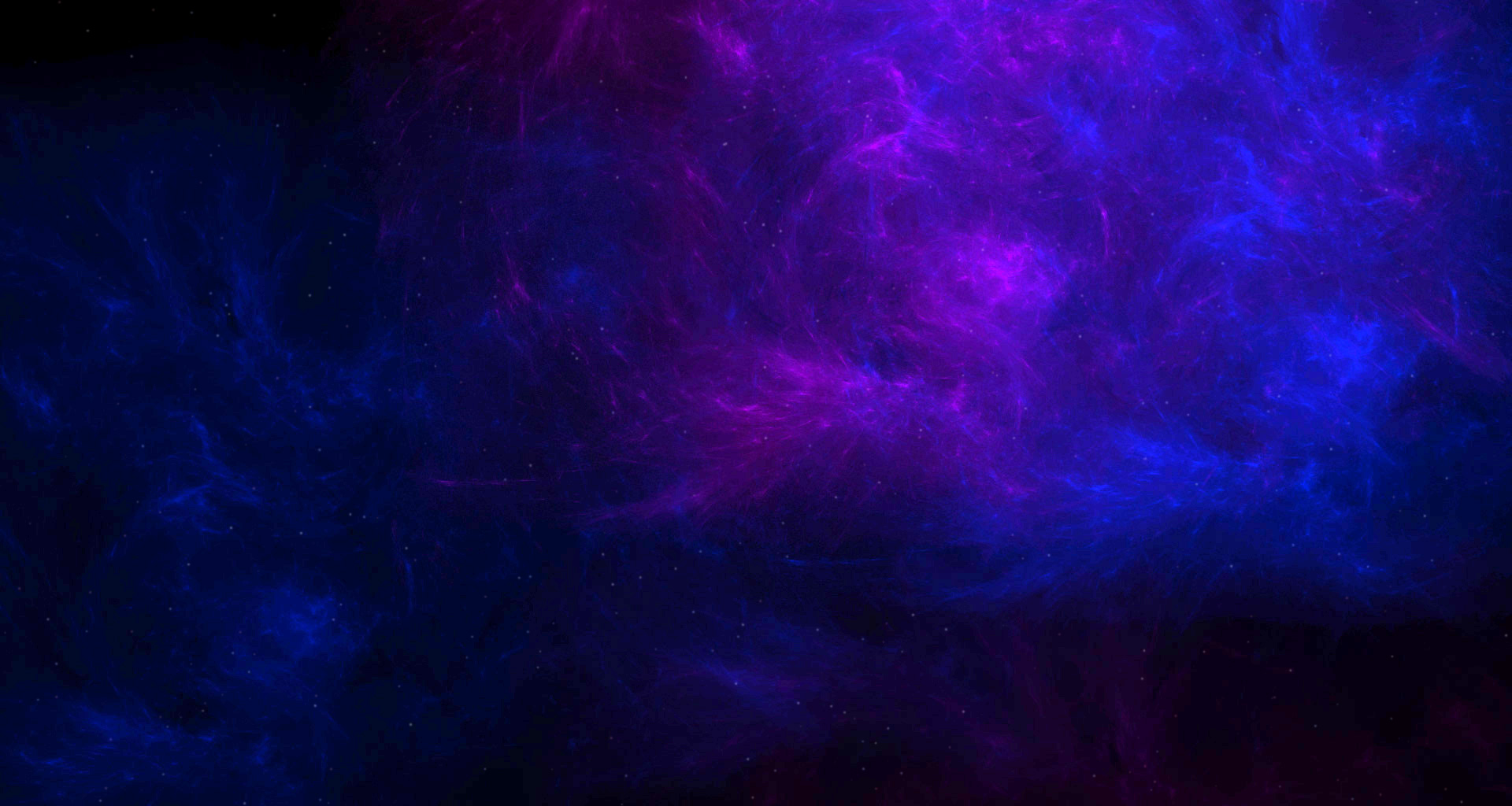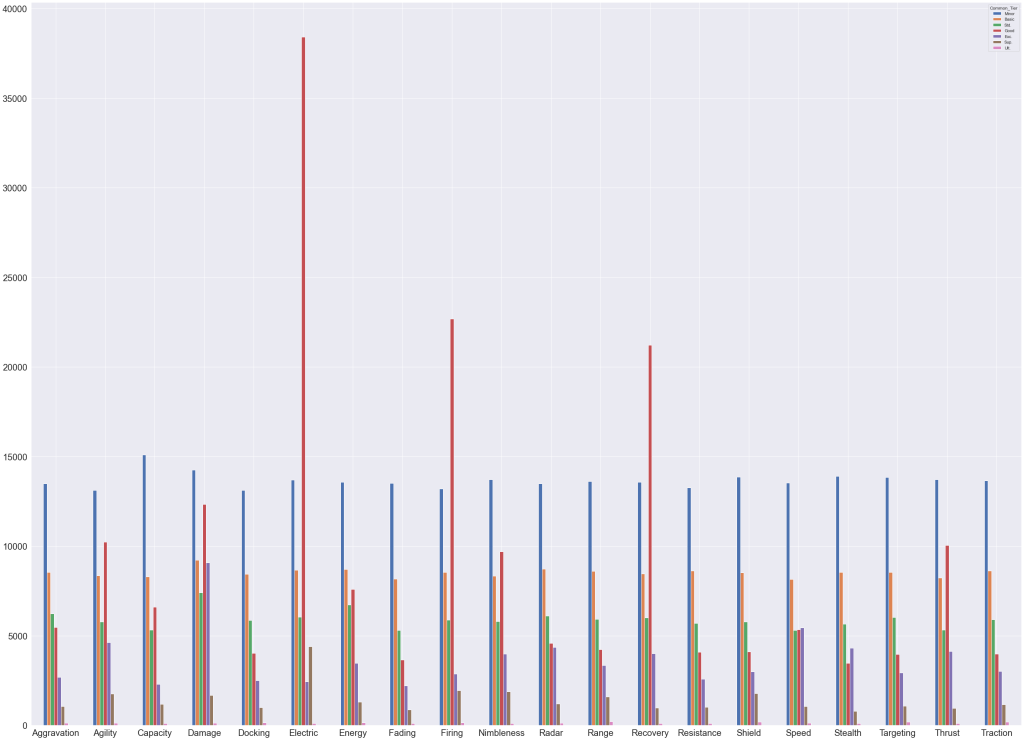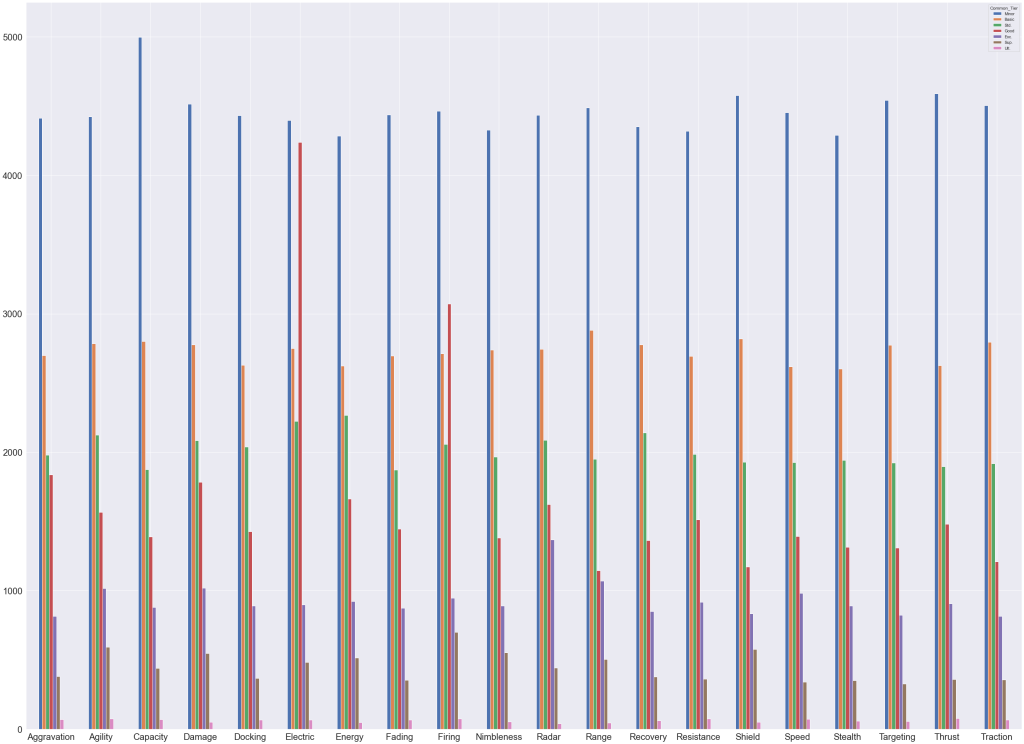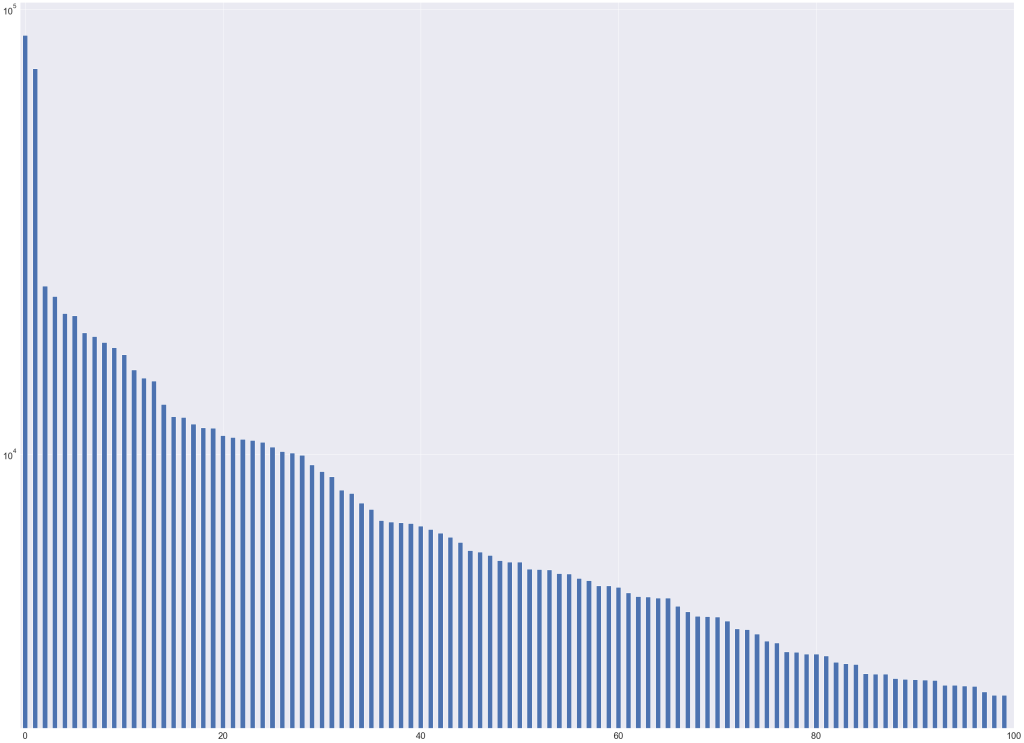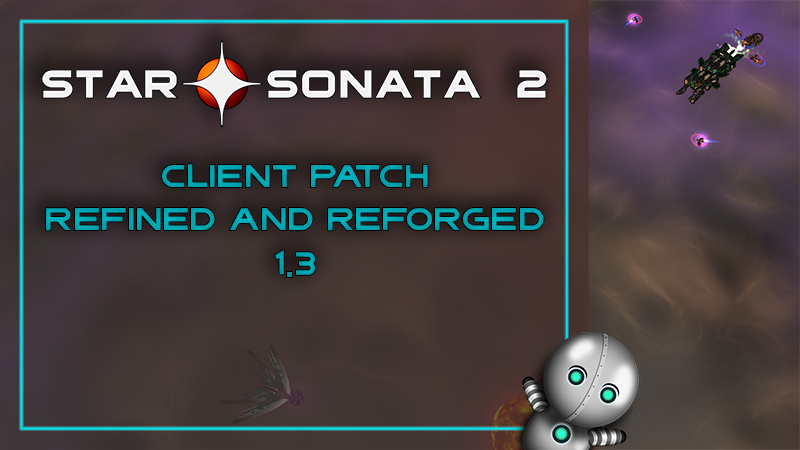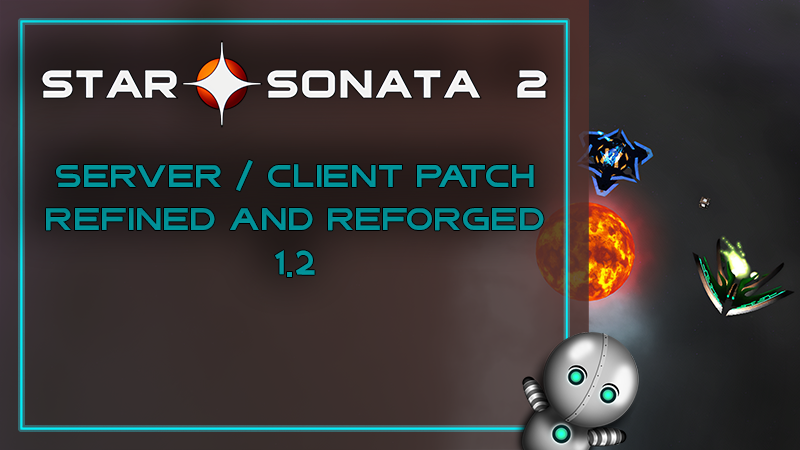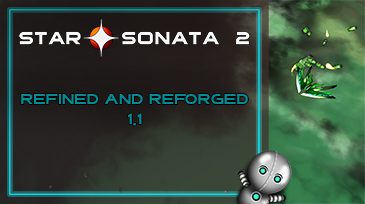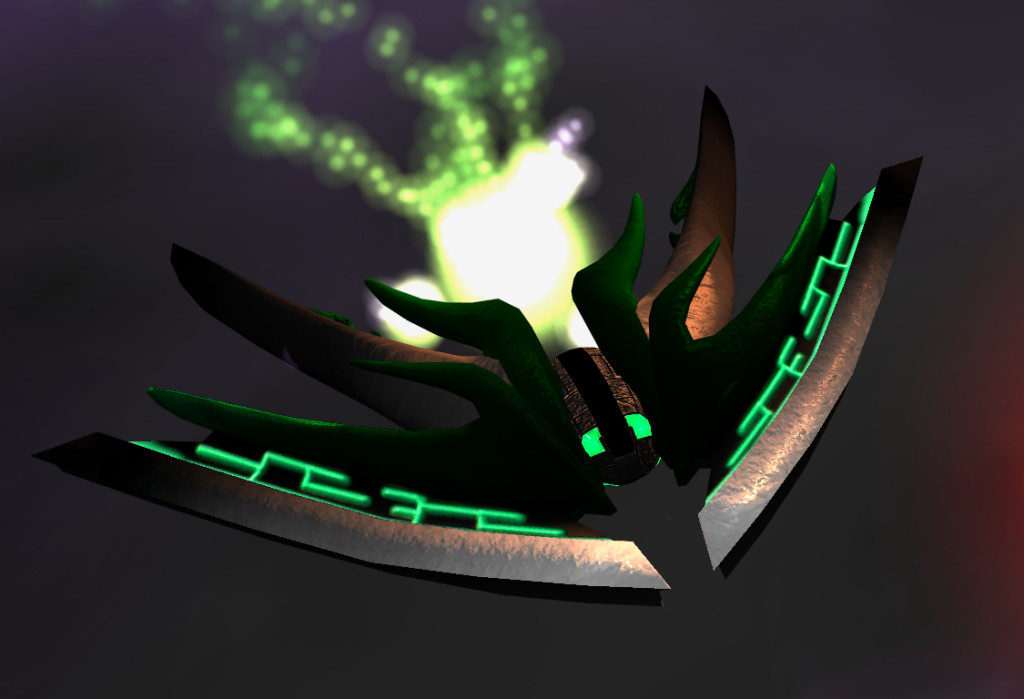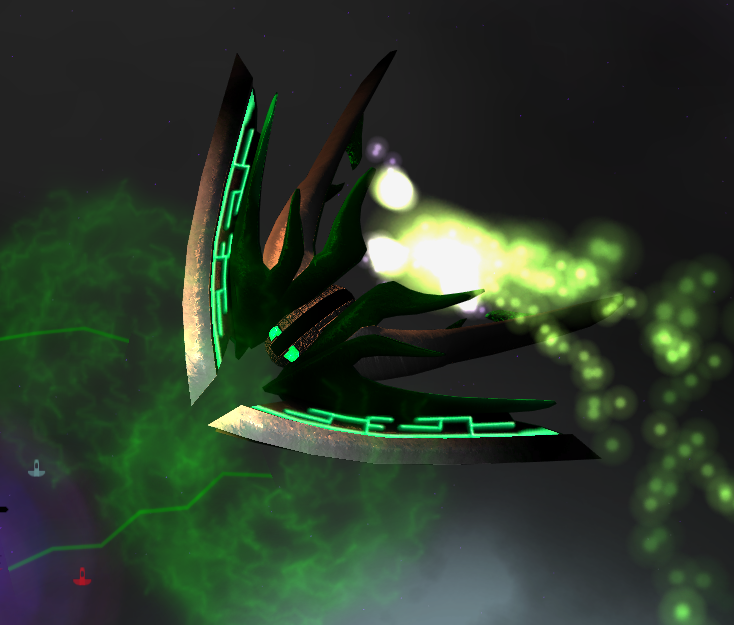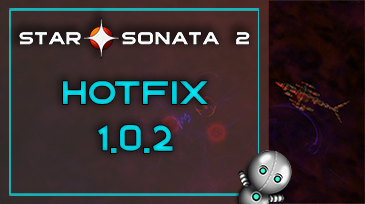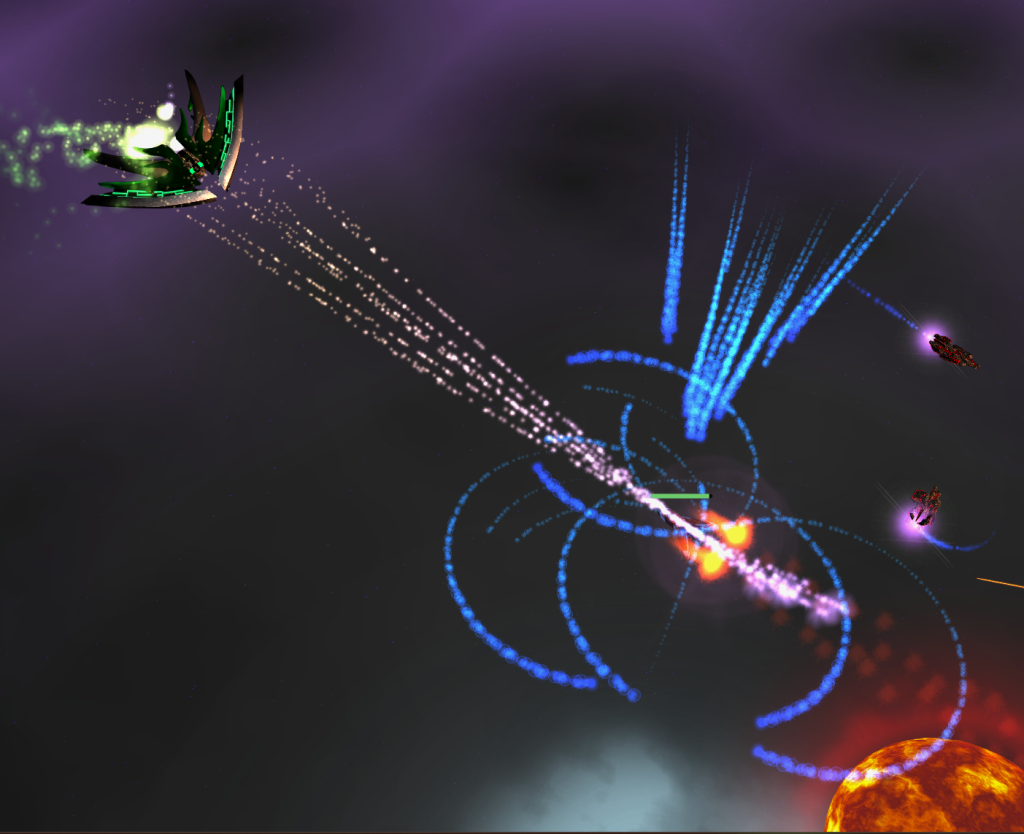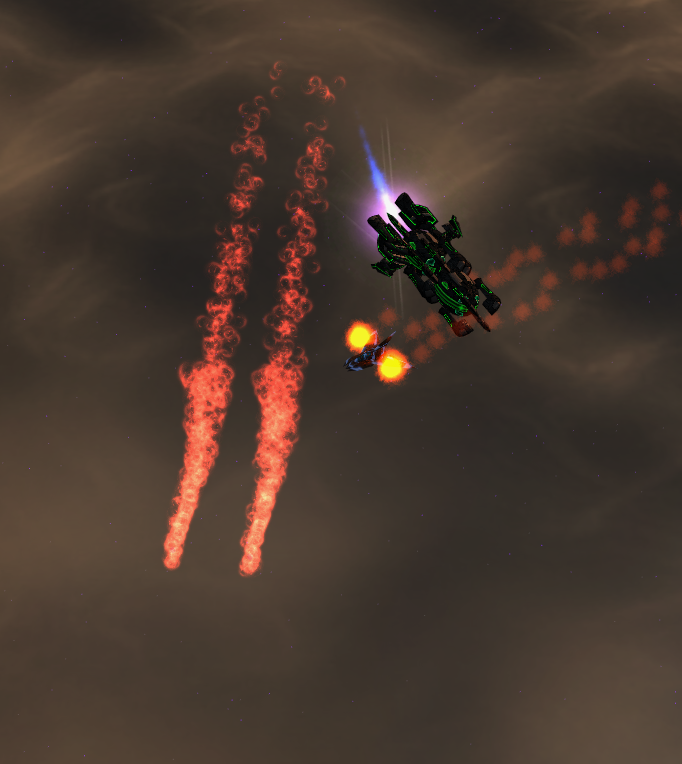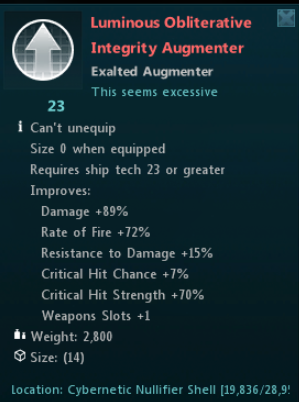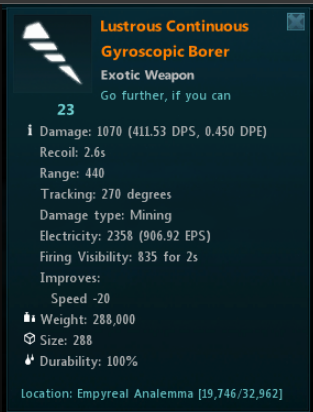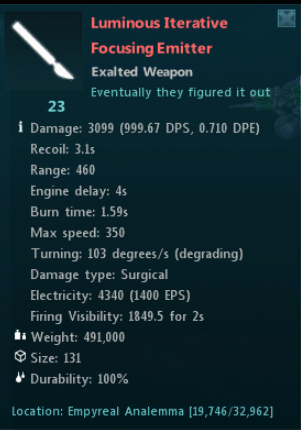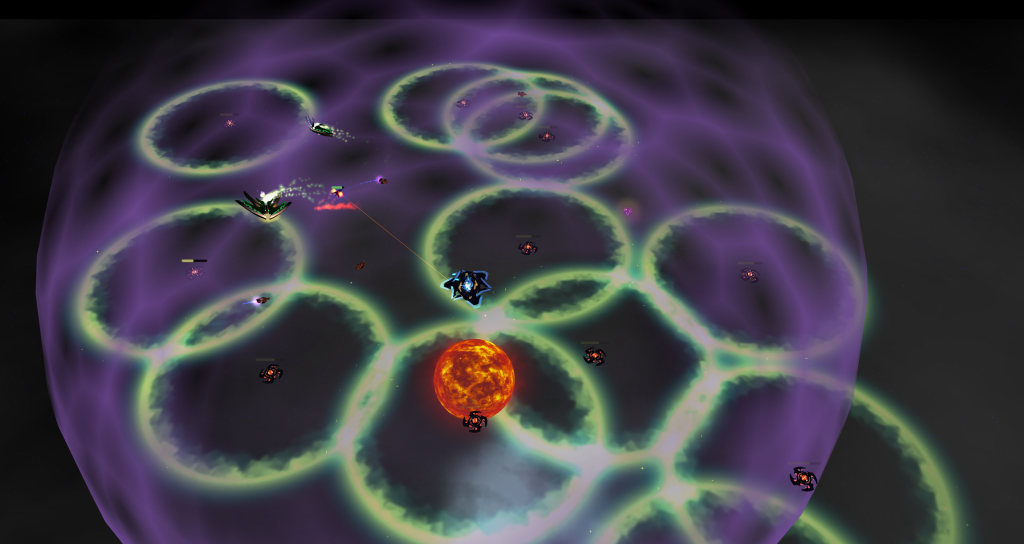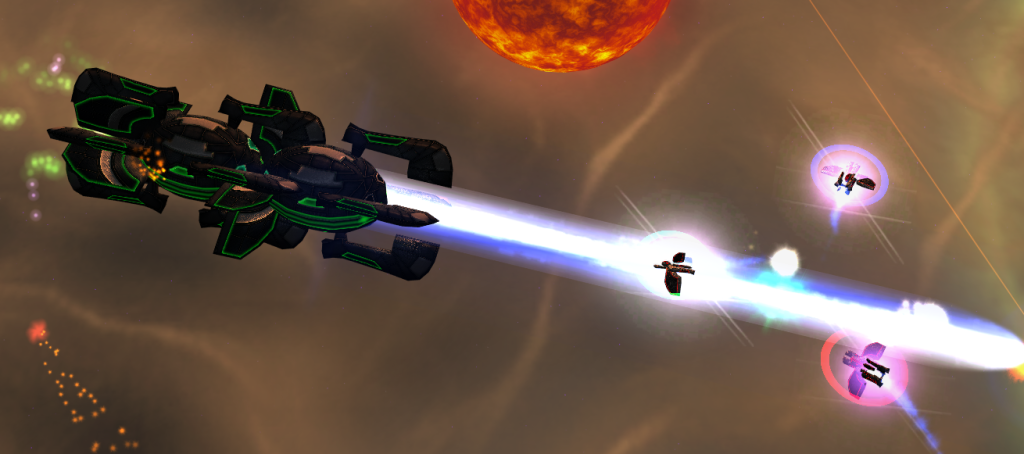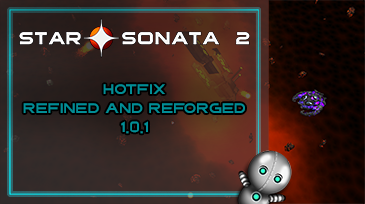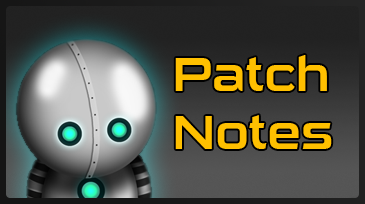Hello Sonatians, we have some exciting news to share from a recent change to the system that distributes augmenters as loot. Last October we added guaranteed augmenter loot to all Dungeon bosses, with a spread of tech levels and augmenter types to help standardize sourcing rates. Since then, we’ve tracked the results of the system and found that while most sourcing rates had settled into a consistent pattern, there were a few anomalies in the distribution of loot. Good news! The outcome shows a system that has a more fair and balanced distribution and can be seen in the charts provided below.
October 2022 – April 2023 Augmenter Distribution by Type and Tech Level
This chart shows augmenter sourcing data from October 2022 to April 2023. For the most part, the lower-tech augmenters are dropped more frequently and therefore there are more of them in the game. As the level of tech increases you can see the number of those items decrease, almost across the board.
However, there are a few points where this is not the case. The spikes in “Good” (red) augmenters show that something was off about these items, especially in the Electric, Firing, and Recovery categories. The team set out to find out why their drop rate was not in line with their tech level. They used loot logs to identify the sources of these augmenters and discovered that they were coming from outside of the intended Dungeon areas.
April 2023 – May 2023 Augmenter Distribution per Type
The data one month after the fix shows us getting much closer to the intended distribution of loot. After removing the anomalous sources outside of the dungeon areas, the augmenter loot distribution conforms to what we originally envisioned. Lower-tech augmenters have higher numbers for the most part and the higher-tech augmenters are fewer. Since April, 51% of augmenters are from Dungeon Galaxies and 24% from Dungeon Galaxy bosses. These numbers will continue to rise as we add more bosses.
Top 100 Augmenter Farmers
In the midst of all this talk about augmenter drop rates, a team member thought it would be fun to see how the top 100 augmenter farmers stack up. It appears there are a couple of people really leading the pack!
We appreciate your continued support and look forward to hearing any feedback you have on this update. Thank you for playing!
